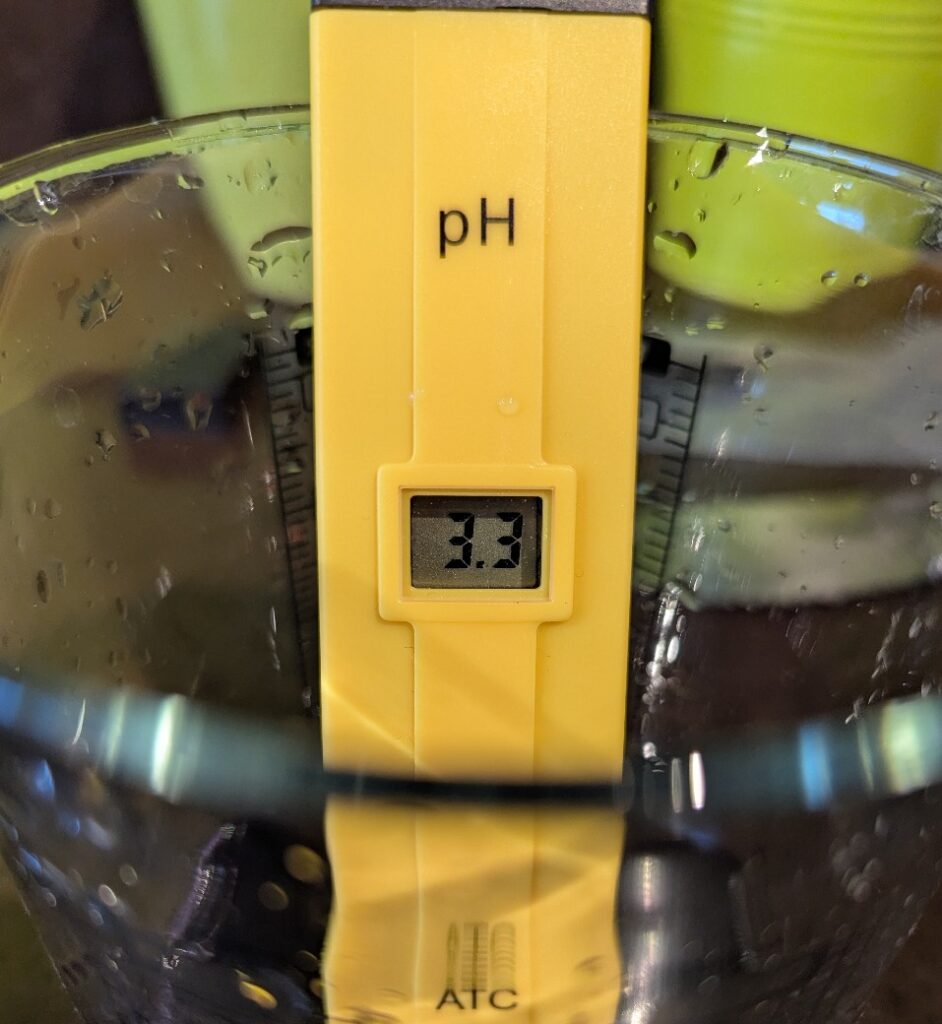
pH is a measure of acidity on a scale from 0 to 14. The relationship between a wine’s taste profile and its acidity can sometimes be misleading due to factors such as sweetness, tannins, alcohol content and winemaking techniques, particularly in red wines. In some cases, I measure the pH level to help determine the true nature of a wine.
Affordable pH meters, an example shown on the left that I use, are readily available on eBay and Amazon, often costing less than a glass of wine. A pH meter can provide insights, helping you understand and compare different wines more objectively.
The pH of red wine typically falls between 3.3 and 4.5, depending on grape variety, ripeness, and winemaking methods. Most red wines range from 3.5 to 3.8, indicating moderate acidity. Lower pH values signify higher acidity, which can improve a wine’s freshness and ageing potential.
White wines generally have a lower pH than reds, typically ranging from 3.0 to 3.4, making them more acidic. In some cases, the range extends into the range 2.7 to 3.5, depending on the grape variety and style of wine. This higher acidity often contributes to the crispness and vibrancy characteristic of many white wines.













